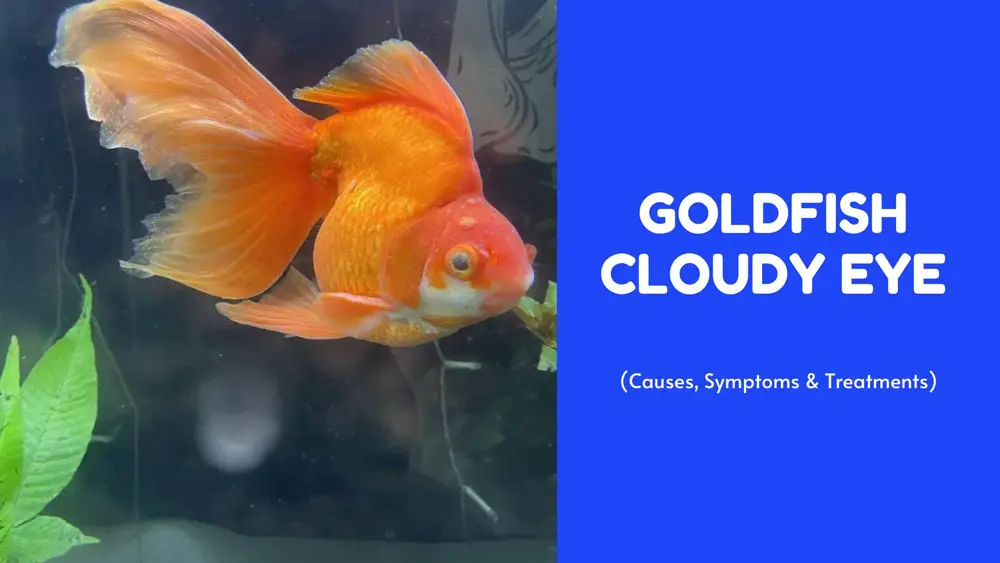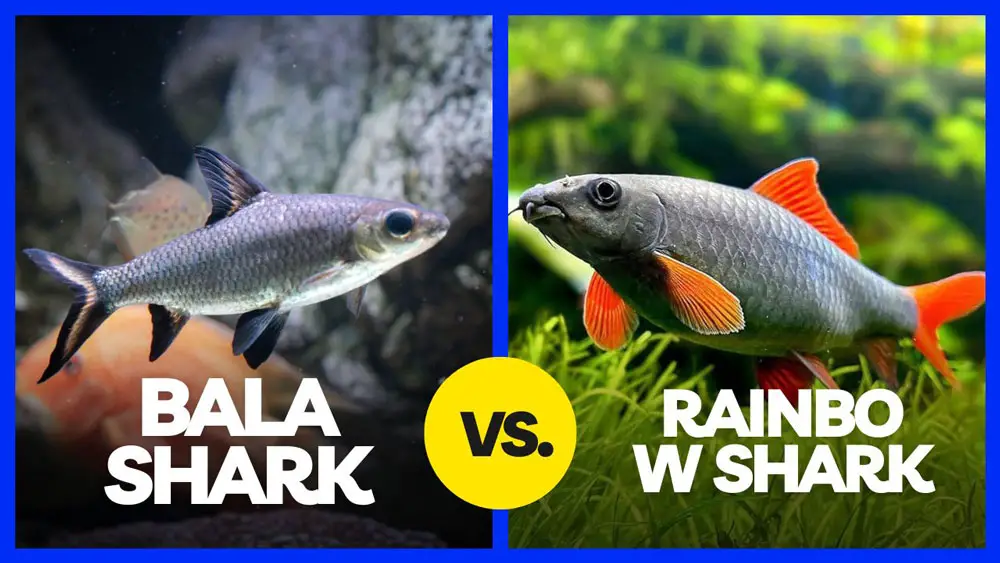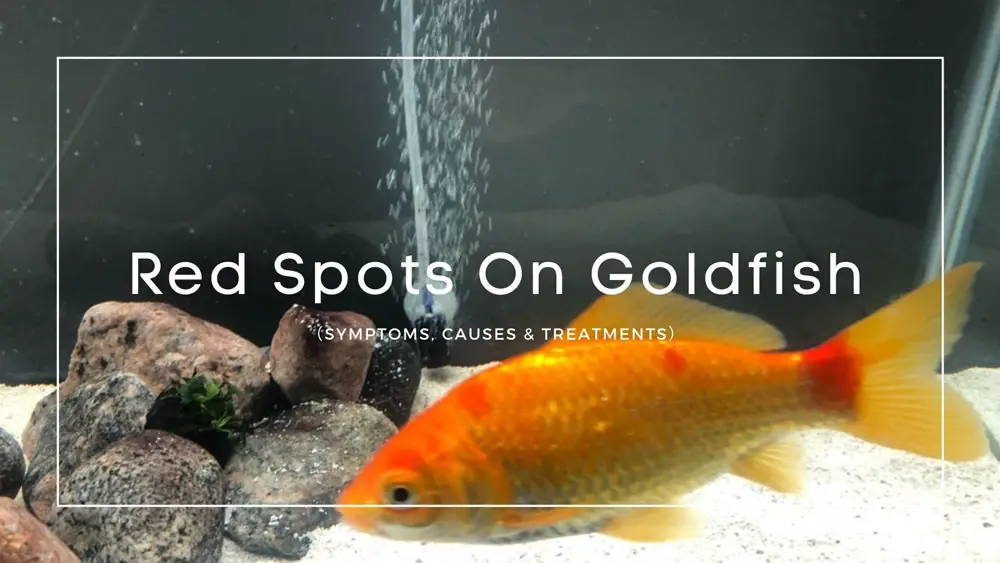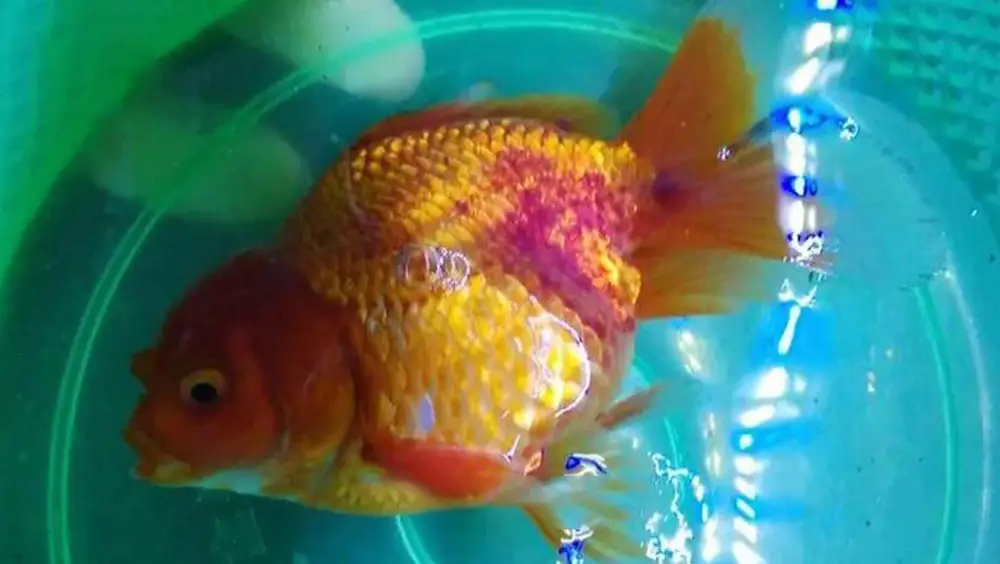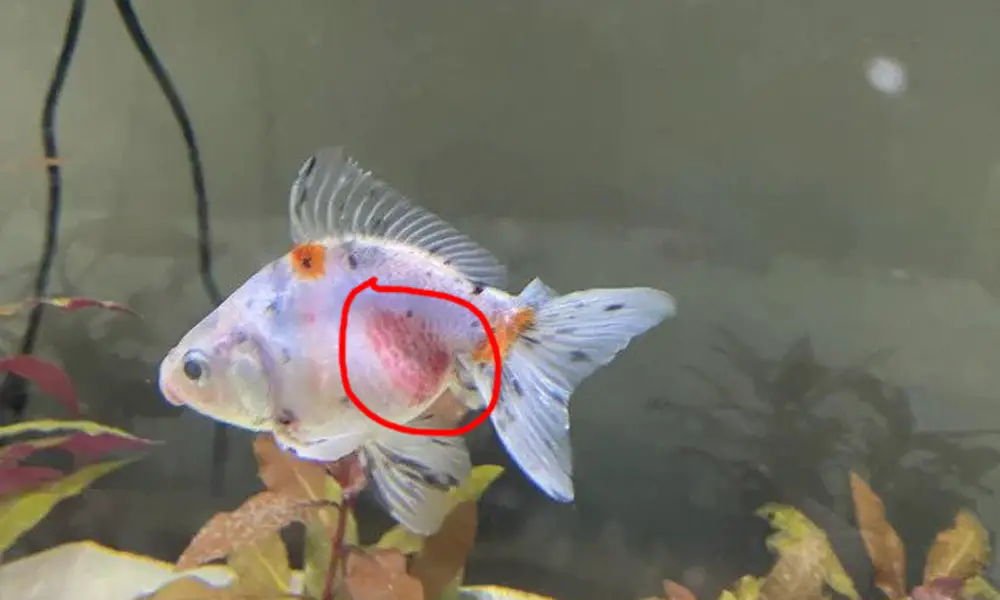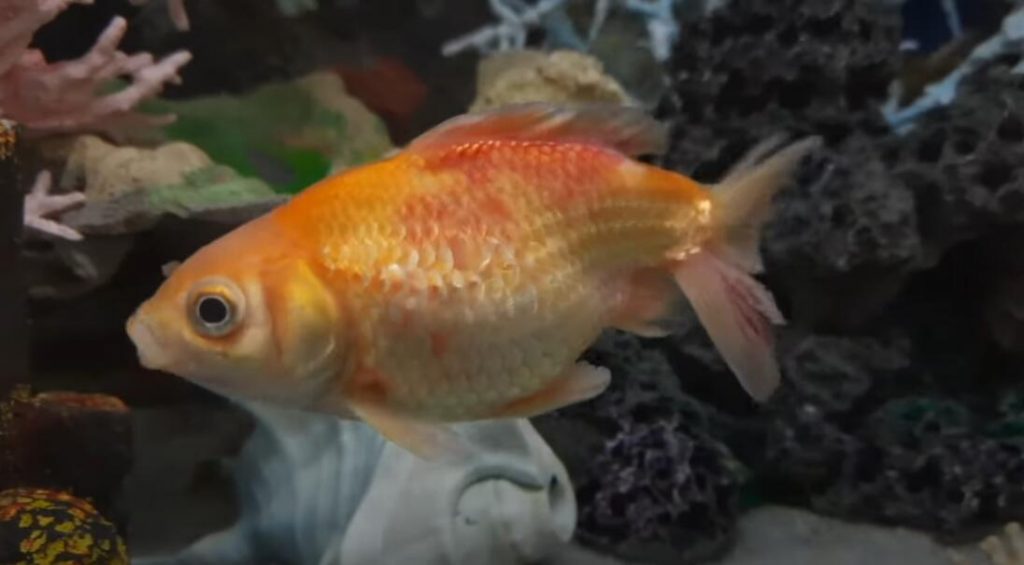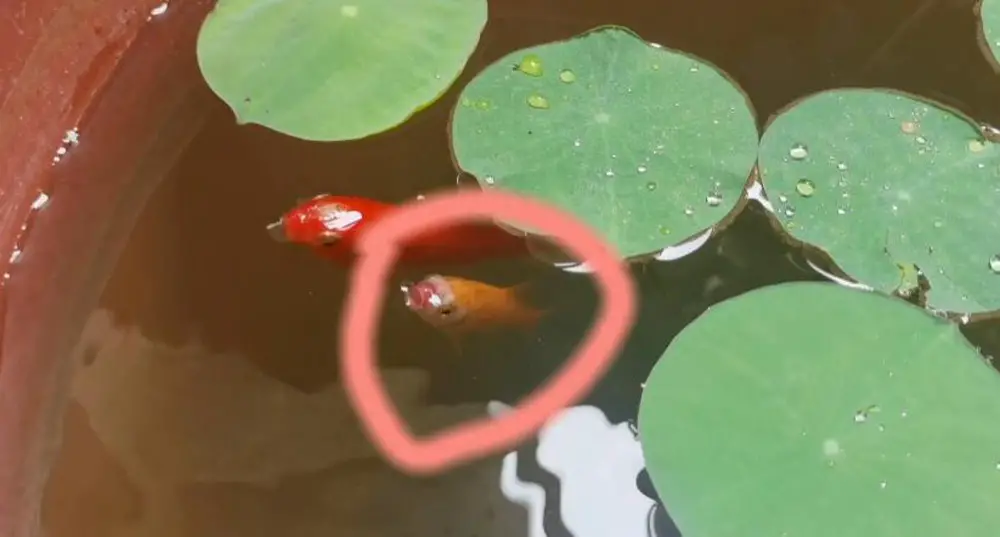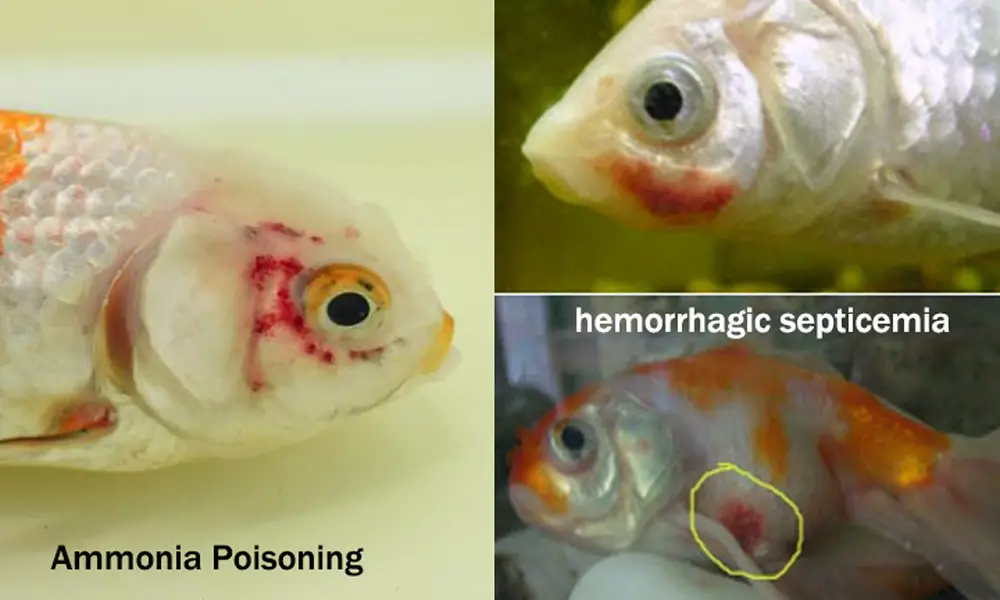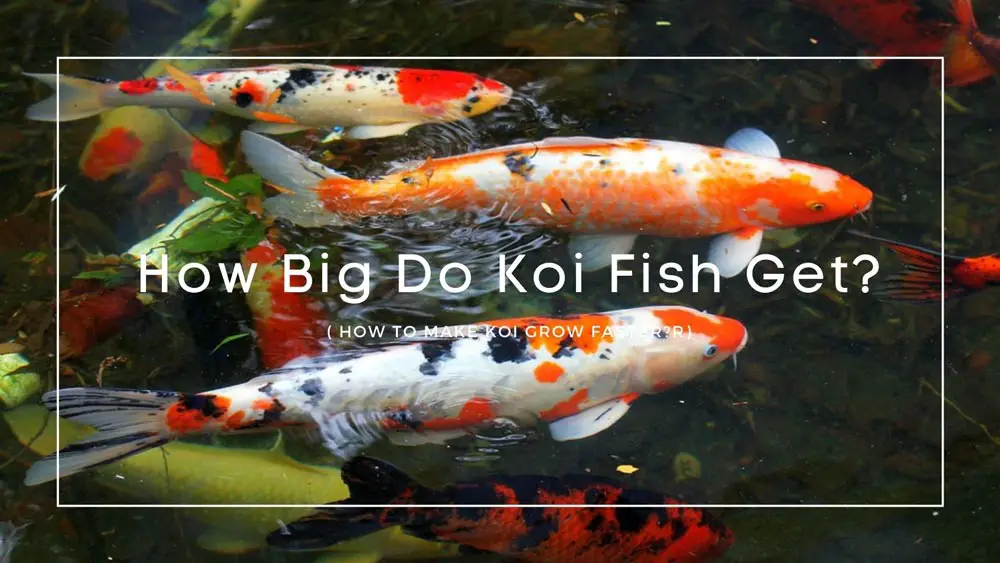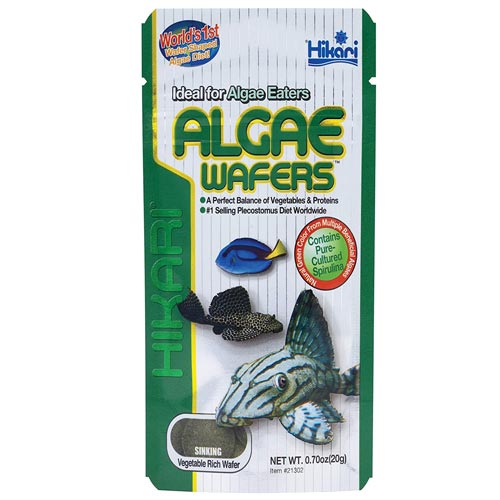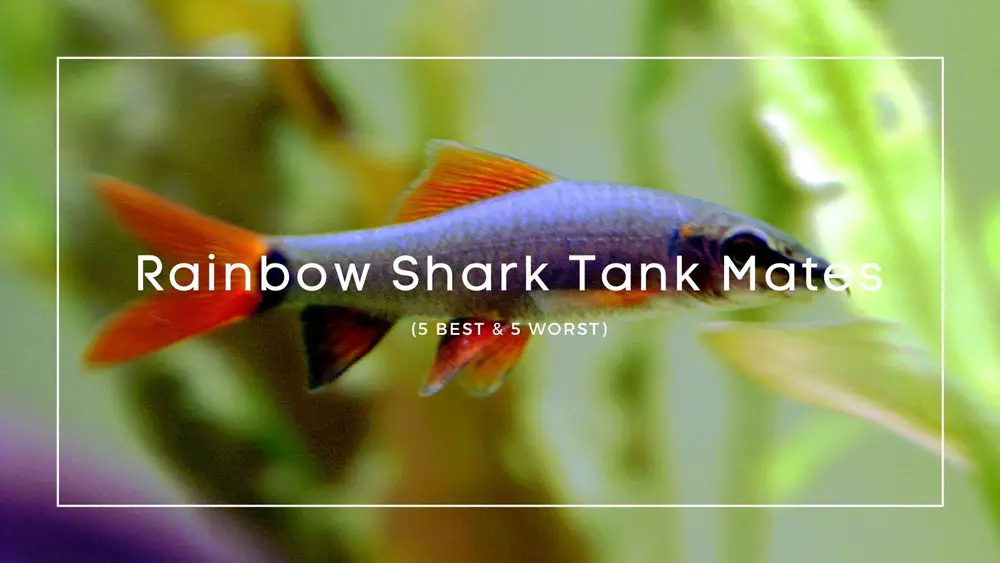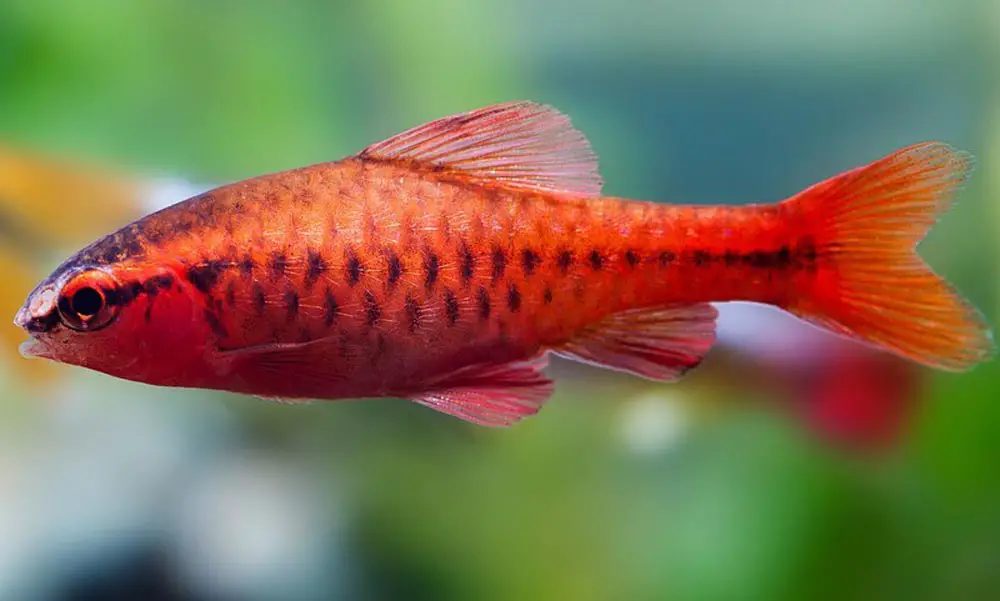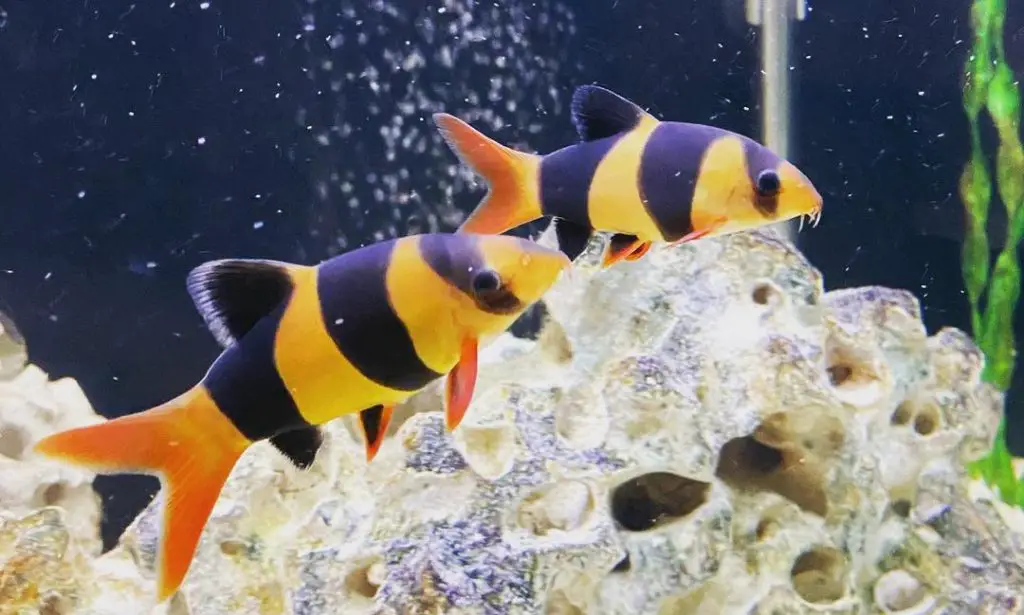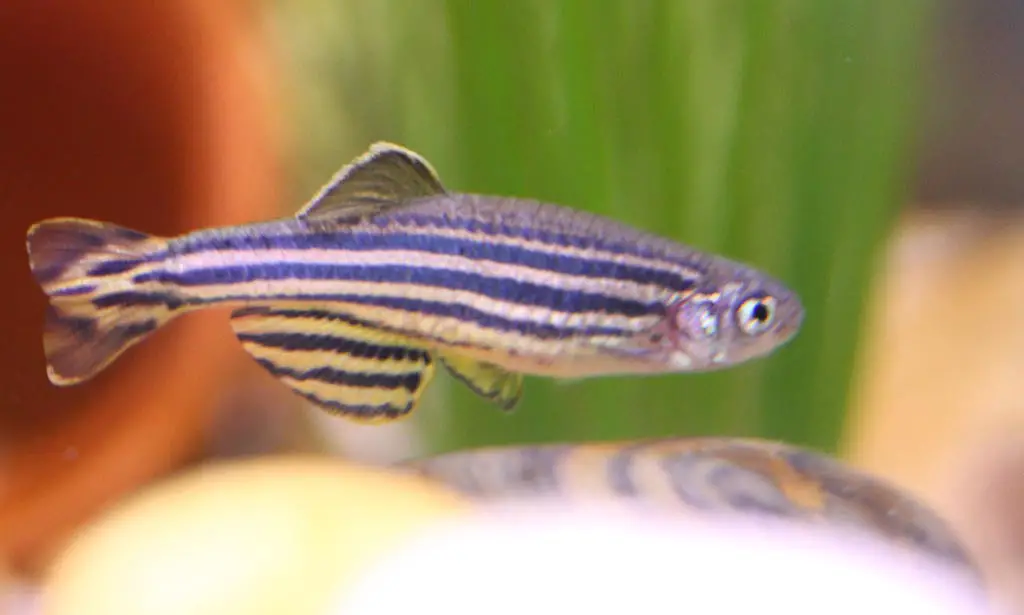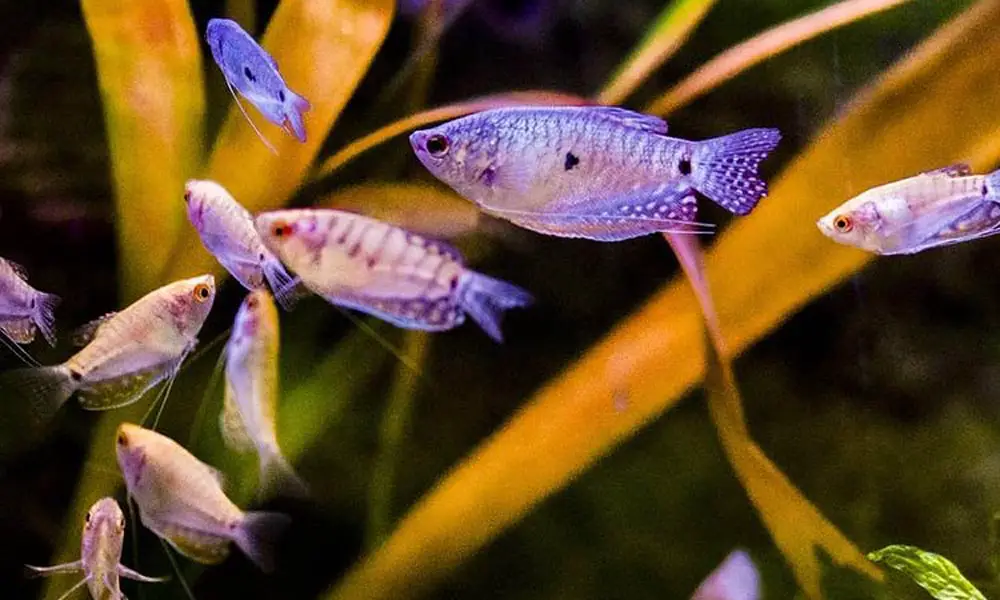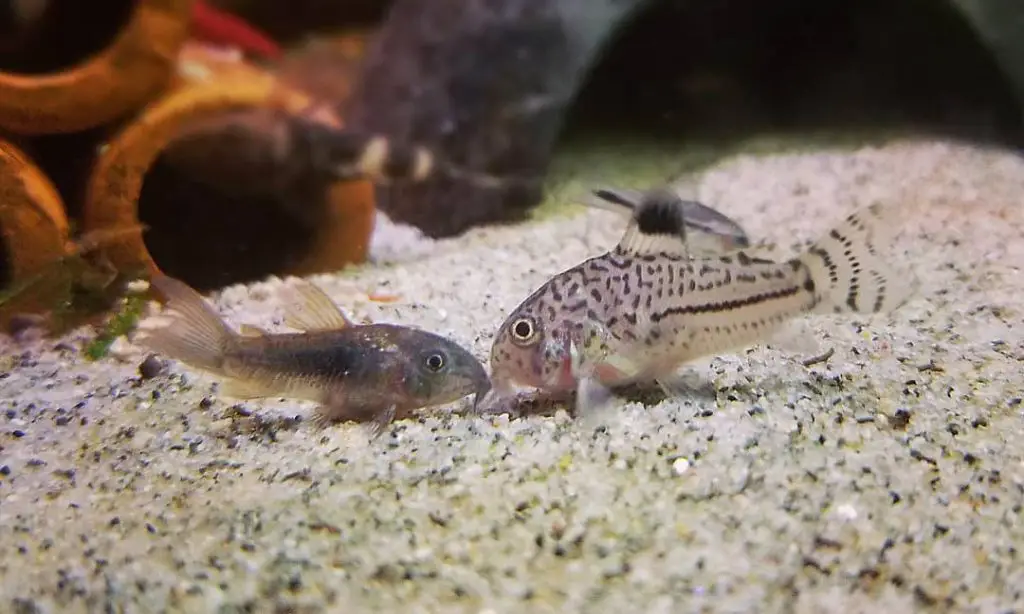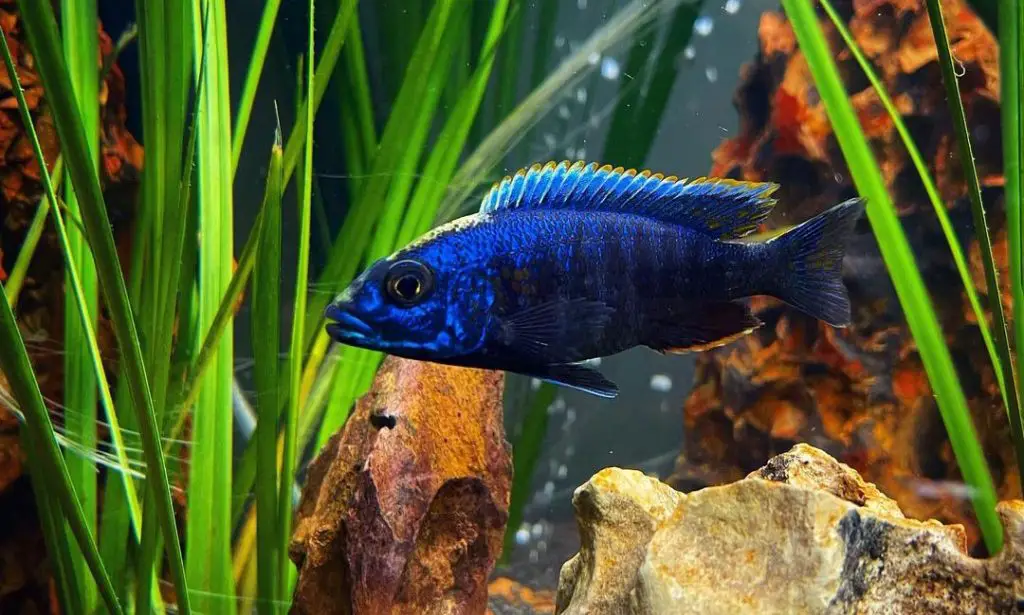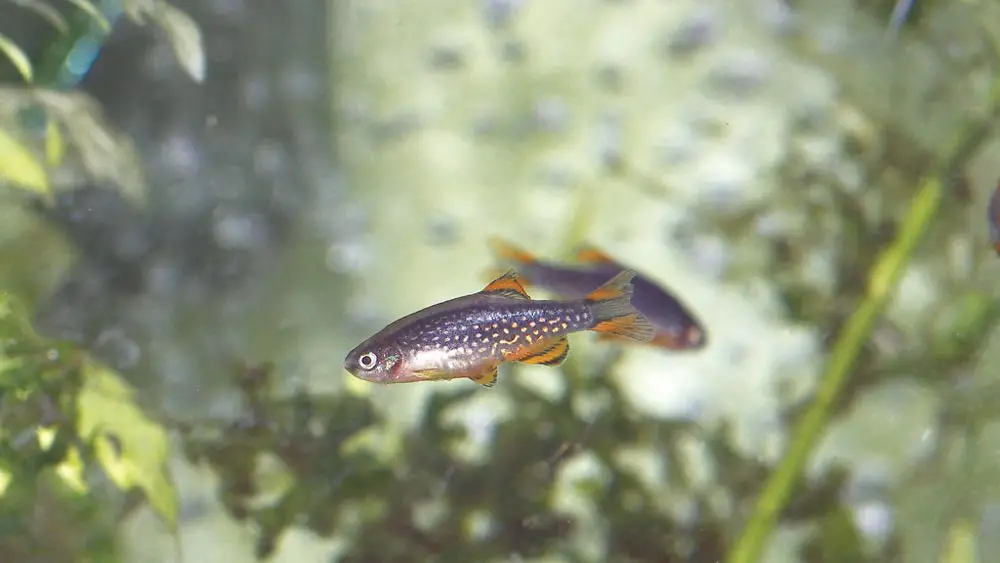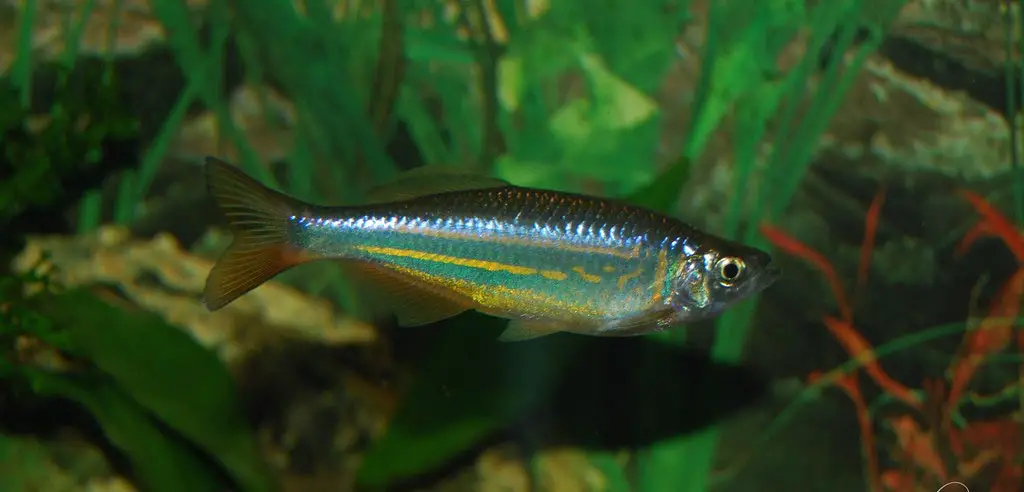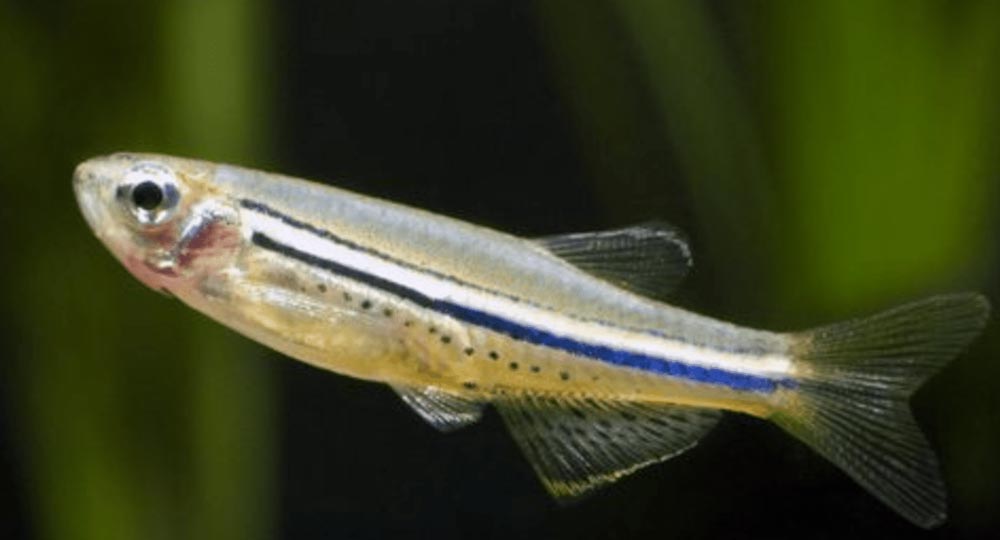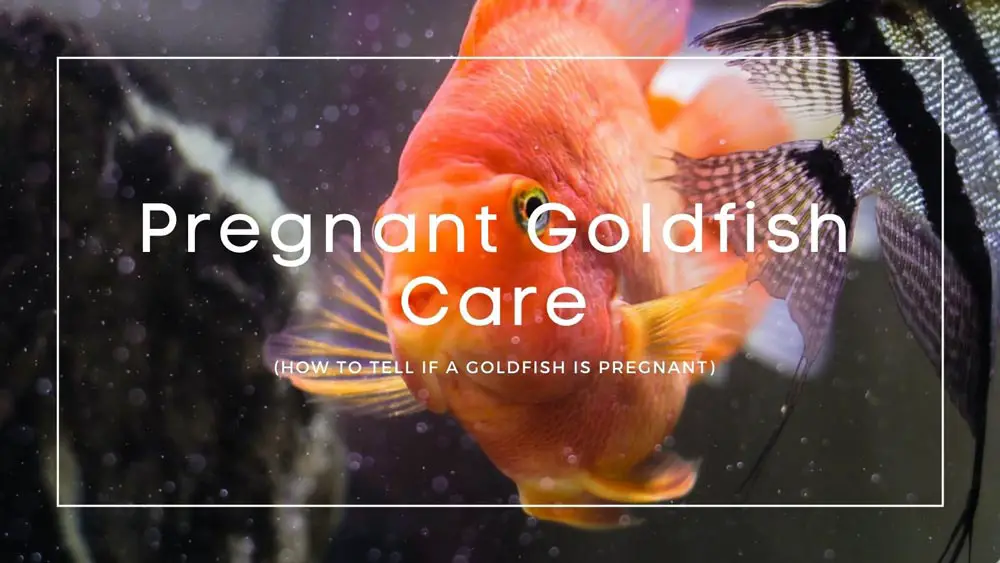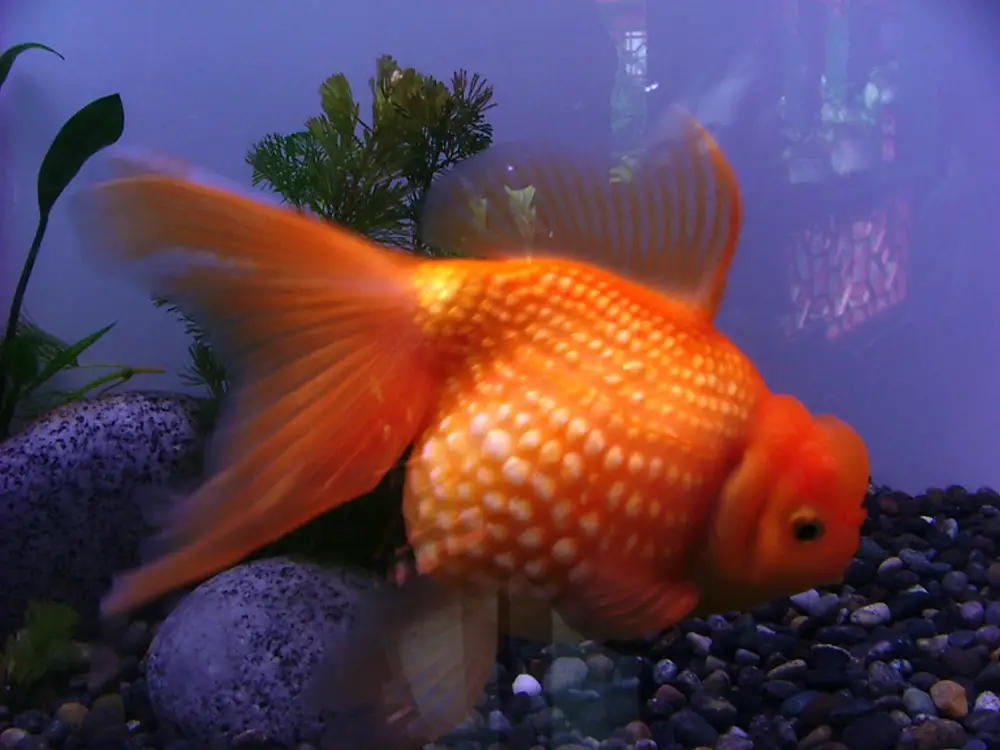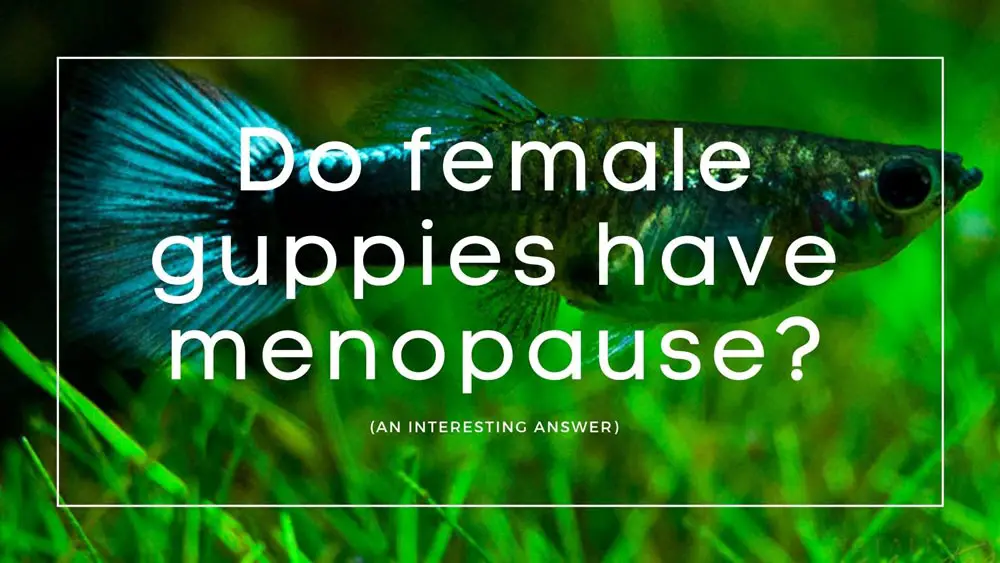Cloudy eye(s) in goldfish is not a disease but a condition caused by a wide variety of possible underlying problems. Unfortunately, goldfish can’t tell us what’s wrong, so it’s up to us goldfish parents to figure out the cause and find an appropriate treatment.
This condition can be a serious symptom of bacterial infection and parasites – particularly when the cloudiness is on both eyes. Of course, when a single eye is infected or damaged, it can still indicate something is wrong.
Don’t panic! In our experience, many goldfish can successfully recover from a cloudy eye by following the proper treatment plan.
What is Cloudy Eye(s) in Goldfish?
Usually, a cloudy eye involves the cornea (the transparent outer covering of the pupil) of the goldfish becoming inflamed or accumulating excessive tissue fluid behind one or both eyes [1], giving it a cloudy, opaque, or swollen appearance.
In some cases, depending on the goldfish varieties and severity of the illness, the fish may show other physical symptoms and behavioral changes, such as bulging eyes, clamped fins, lethargy, buoyancy problems, etc.
Fancy Goldfish with Protruding Eyes
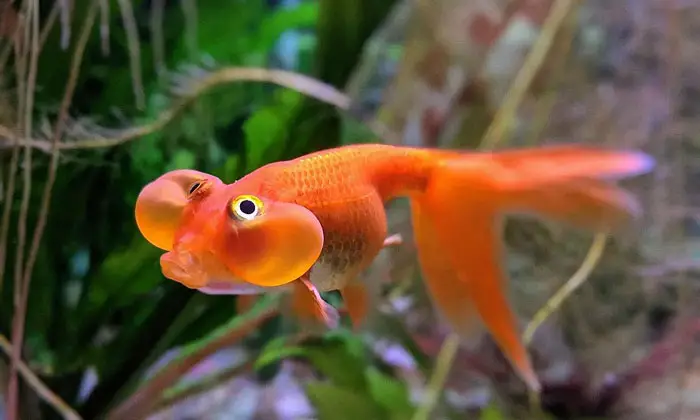
Fancy goldfish refers to different varieties of goldfish (Carassius Auratus) that have been specifically bred to develop certain physical characteristics.
Some have enhanced body colors or shapes, some come in flowy double tails, and some are known for their naturally protruding eyeballs. Of course, this is definitely not the Popeye disorder.
While goldfish varieties with protruding eyes, like telescope-eye goldfish (Red Moor Goldfish) and Bubble Eye Goldfish, can be a beautiful sight to behold, they are also more susceptible to developing cloudy eyes due to their large, delicate eyes are prone to cuts, and tears from tank decorations and tank mates.
What Causes Goldfish Cloudy Eye?
Based on years of experience, the cloudy eye goldfish can be due to physical trauma, bacterial infection, parasites, and water quality issues.
Like Popeye, the cloudy eye disorder in goldfish may be unilateral (a single eye) or bilateral (both eyes).
When only one eye appears cloudy, it’s more likely associated with trauma rather than an infection and poor water quality. Luckily, in this case, the cloudy eye will eventually go away as it heals.
If both eyes are affected, some infections and/or water quality issues may be blamed. It’s critical to identify the underlying cause and take appropriate action, or it will cause the fish to die.
Water Quality Issues
Poor water quality is one of the most common causes of goldfish illness and death. Goldfish are messy eaters and poopers. This means goldfish tanks can become very dirty rather quickly if not maintained properly.
Among these important water parameters, ammonia levels and water temperature are mainly responsible for the cloudy eye in goldfish.
Ammonia Poisoning
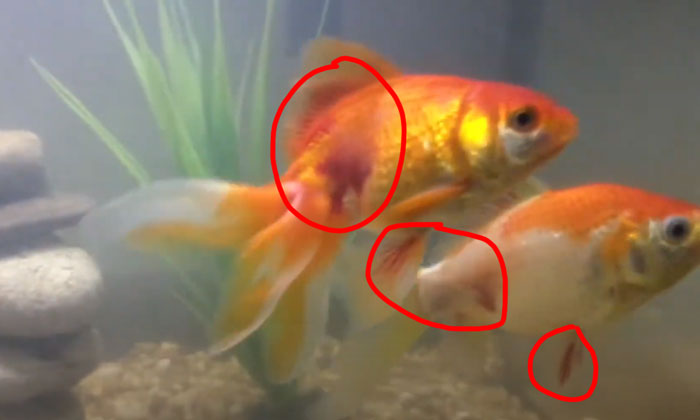
As you may already know, ammonia poisoning usually occurs when you first set up a goldfish tank, but it can also happen in a “mature” aquarium due to the poor functioning of the nitrogen cycle, where ammonia formed from fish waste and uneaten food is converted by beneficial bacteria into nitrite, then nitrate, and finally back to air.
When ammonia gets too high due to overfeeding or overpopulation, your fish’s eyes may appear cloudy; however, this is less noticeable than the following signs.
| Symptoms | Causes |
|---|---|
| Red or purple gills Bloody patches or streaks on the body Ragged or frayed fins Laying at the bottom of the tank Difficulty breathing Loss of appetite Lethargy | Uncycled aquarium Chemically treated tap water Increased fish byproducts Overstocking & Overfeeding Incorrect pH levels |
Treatment:
It’s important to note that ammonia poisoning can be fatal to goldfish, so prompt action is critical. The first step is to test the ammonia level with a standard test kit. If the reading rises above 1 ppm, start treatment immediately by following these steps:
- Reduce ammonia levels: Perform a partial water change (50% or more) to dilute the toxic ammonia levels in the aquarium.
- Improve water quality: Add a high-quality aquarium water conditioner to remove chlorine, chloramines, and heavy metals from tap water.
- Add bacteria: Add a bacteria supplement to the aquarium to establish a healthy biological filter.
- Increase aeration: Increase the aeration in the aquarium by adding an air stone or increasing the power of the existing air pump.
Gas Bubble Disease (GBD)

Gas Bubble Disease (GBD) in goldfish is a condition that results from gas supersaturation [2], leading to symptoms such as small bubbles trapped within a fish’s eye or tissues.
Symptoms:
In GBD, the most obvious sign is the presence of small bubbles behind or inside the eye, though they may also be found in other parts of the body, such as fin rays and operculum (gill openings).
Causes:
- Cracked or loosely connected pipe or filtration component.
- Sudden changes in water temperature.
- A sudden rise in pressure.
- Abundant algae growth in ponds
Treatment:
To treat GBD, it is essential to determine the source of the excess gases. Check the pipes, filters, and water temperature. Never try to burst the bubbles, as this will often bring secondary bacterial infection.
Physical injury
As mentioned, some varieties with protruding eyes are vulnerable to abrasion that can cause localized inflammation. As a result, you may notice your goldfish’s eye turn cloudy or exophthalmic (popped out), depending on the level of the injury.
There is no treatment for traumatic eye injuries in fish. Preventative measures such as providing a safe environment with smooth surfaces, clean water, and silk aquarium plants are essentialial.
Bacterial Infection
Goldfish frequently develop cloudy eyes as a result of bacterial infections. If both eyes are cloudy and swollen, it’s likely that bacterial infections are present.
Virtually the root causes of bacterial infections are related to poor water conditions in the aquarium.
Streptococcus spp.
Although most aquarium bacterial infestations are Gram-negative, fish eye disorders are usually caused by Gram-positive bacteria, specifically Streptococcus species or related bacteria, including Lactococcus, Enterococcus, and Vagococcus [3].
Streptococcal (often shortened to Strep) outbreaks can cause high mortality rates (> 50%) over a period of 3 to 7 days. Unlike most common opportunistic fish bacteria, such as Aeromonas or Columnaris, Strep can be more aggressive and even fatal.
Symptoms:
The noticeable sign of Strep disease is usually cloudy eyes (corneal opacity-whitish eyes). You may see a variety of other signs of illness as well.
- Enlarged eyes (exophthalmos)
- Hemorrhages in the eye, gills, or the base of the anal fin
- Excess mucus
- Difficulty swimming
- Lethargy
- Darkened coloration
Treatment:
For moderate Strep infections, a hospital tank with API® E.M. Erythromycin (Erythromycin Phosphate) will work. In severe cases, Seachem NeoPlex used in a medicated food mix is recommended.
Aeromonas spp.
Goldfish and koi are the most popular cold-water fishes, which are susceptible to Viral Hemorrhagic Septicemia (VHS), a highly infectious and lethal virus caused by the Aeromonas species.
Aeromonas is a group of Gram-negative, facultative anaerobic bacteria, with A. salmonoid (commonly called Furunculosis) and A. hydrophila being among the best-known species. Both species are causative agents to be linked to causing hemorrhagic streaks or ulcers in the fins, tail, gills, and skin.
Symptoms:
Hemorrhages may also be seen in the internal muscle and organ tissues. In some instances, goldfish may exhibit other signs such as exophthalmia (pop-eye), cloudy eyes, ascites (distended abdomen), discoloration, abnormal swimming behavior, and loss of appetite.
Treatment:
Given the fact that Aeromonas are Gram-negative, facultative anaerobic bacteria, treatment is currently limited to antibiotics. However, treating them in cold water (below 65°F) can be challenging as many antibiotics lose efficacy.
Seachem KanaPlex (Kanamycin), a Gram-negative antibiotic, mixed with fish food, has proved to be effective in treating Aeromonas infection.
Parasites
Many types of protozoan parasites can also contribute to cloudy eyes in goldfish. They enter your fish pond or aquarium are the result of failure to quarantine new fish, plants, or other decorations.
The most common of these are:
Epistylis spp.

Several Epistylis species (ciliated freshwater protozoan) are known to infect the skin, fins, and gills, resulting in irregular white spots on the fish’s eyes and other body parts. Epistylis in cold water fish is not common but may break out during the warmer months.
Symptoms
Epistylis infestation is often confused with ich due to similar white spots on the skin. However, it can be differentiated by the irregular shape and translucent coloration of the spots.
Treatment
Maracyn 2 or Kanaplex medicated fish food can be effective. However, to kill the Epistylis on the fish’s eggs, the tank should be treated with Malachite green.
Eye Flukes (Diplostomum spathacaeum)
The eye fluke (Diplostomum spathacaeum) [4] is a microscopic parasite that can infect warm-water and cold-water fishes. Occasionally, tiny worms can be seen wriggling around in the goldfish’s eyes. These parasites can be tough to eradicate, as they often invade the fish’s eye lenses, where they are protected from the host’s immune system.
Symptoms
The infected goldfish often have enlarged and cloudy eyes.
As the parasite replicates and spreads, the goldfish will generally become blind in the infected eye, affecting its feeding and growth.
Treatment
Unfortunately, there is no effective treatment currently available to treat eye flukes.
Cataracts
Another serious but uncommon eye disorder that goldfish can suffer from is cataracts. This condition occurs when the lens of the eye becomes cloudy or opaque, reducing the vision of the fish. This can be caused by various factors, including genetics, injury, infection, or old age. There is also no known treatment or cure for goldfish cataracts.
In conclusion
Goldfish cloudy eye(s) can be caused by several factors and should always be addressed as soon as possible. Treatment options include antibiotics, parasite medications, and supportive care.
Unfortunately, cataracts and eye flukes are untreatable and may cause permanent vision loss.
For a successful treatment, always consult your aquatic veterinarian for the best recommendations. They can provide personalized advice for goldfish care and treatment when needed.
Good luck!
Article Sources:
- Aitchtuoh, Fischer. Treating Pop-Eye. Central Florida Aquarium Society
- Effects of Total Dissolved Gas Supersaturation in Fish of Different Sizes and Species. National Library of Medicine
- Streptococcal Infections of Fish. University of Florida
- Diplostomum spathacaeum. Wikivet
